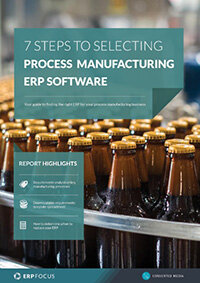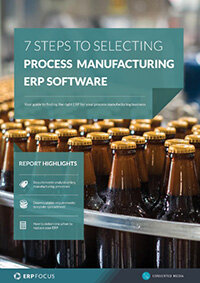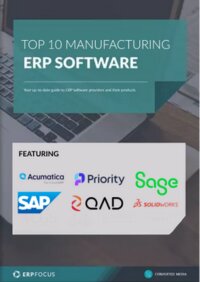Manufacturing ERP: another link in the cold chain
Your trailer load of ice cream just arrived. Trailer temperature is exactly zero - just as it should be. But did you know that the refrigerator unit on the trailer ran out of fuel two days ago? This has been a concern of food manufacturers, processors, and distributors for some time. This process is an example of a temperature controlled supply chain, also known as a cold chain.
Many pharmaceutical businesses have the same kinds of cold chain concerns. The vaccine arrives when it should, but we need to know that the temperature and other environmental factors have remained within a defined tolerance range. Otherwise the vaccine will have lost some or all of its potency. Some chemical producers also need to know that an adhesive, for example, has been stored at the right humidity and temperature or the shelf life will be diminished.
Managing inventory condition
Of course, as part of the cold chain, you need to know the condition of your own inventory. You also need to know about its condition before you received it and throughout the procurement and distribution process. Your customer probably expects you to vouch for such conditions while the products are en route to their business.
Recommended reading: process manufacturing ERP selection - 7 steps to success
Automated data loggers hooked up to your manufacturing ERP are part of the solution. The logger for the ice cream trailer tracked the temperature and time from the moment the trailer was sealed until the seal was opened. The temperature certainly did rise while the refrigerator was out of fuel. But if the insulation kept the temperature within your tolerance range, the ice cream will be ready to dish out with a cherry on top.
Active vs passive
Data loggers can be passive when collecting information. They can be placed with your product, track the environment and store data on internal memory. The record is visible as soon as the trailer is opened and entered into your ERP according to your own quality and data entry processes.
Data loggers can also be active. This type of logger will transmit the data wirelessly so that it is continuously visible within your manufacturing ERP. This method of monitoring the cold chain allows necessary corrective action to begin immediately when an out-of-tolerance situation arises; an important option when your inventory is at stake.
Beyond inventory, you can track the cold chain through to which customer received which lot of product and what conditions were present when the order was shipped.
Where does all that cold chain data go? Your manufacturing ERP system stores it all automatically and ready for analysis at any time, right? If your ERP is specifically aimed at the food industry, the data fields are all ready for your use. If you have a generic ERP, simply use some of the user definable fields to log your data.
Manufacturing ERP should track the ongoing environmental status of your inventory. Beyond inventory, you can track the cold chain through to which customer received which lot of product and what conditions were present when the order was shipped. Did another customer receive some of the same lot? ERP has the answer and is there to reassure you about the dynamic condition of your inventory and the orders you fulfilled for all your customers.
Free white paper

7 Steps to Selecting Process Manufacturing ERP
Your guide to finding the right ERP software for your process manufacturing business

Featured white papers
Related articles
-

ERP for make-to-order manufacturing
How can ERP help your make-to-order manufacturing business thrive?
-

CMMC Compliance: What Aerospace and Defense Manufacturers Need to Know
Key insights on CMMC compliance, deadlines, and securing DoD contracts with CMMC 2.0 certificatio...
-

Shop floor management: 4 ways ERP can improve efficiency
Learn about the shop floor efficiencies that can be realized through the implementation of manufa...




